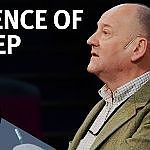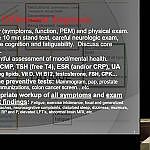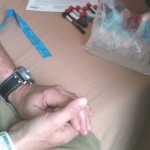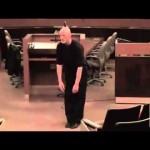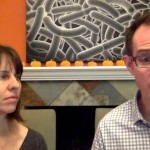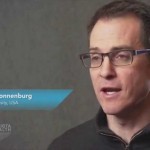Merida
Well-Known Member
@Victor Maalouf
OMG. I did it. Pictures are worth a thousand words. These are the fronts of the SacroOccipital brochures. The distortions are exaggerated for clear demonstration . So, these pictures demonstrate the various external and internal imbalances you have 'discovered' thru a lot of incredible observation and intuitive thought.
The only thing I question is that my high hip may be on the same side as the high shoulder??? Must think and look again.
The lines inside the brain represent the dural membranes. Yes, my MRI shows dramatic torquing, with the small space/ crowding in the left lower brain/ brainstem.
Here are quotes from the brochure: "SacroOccipital Technique is so named because of the relationship between the Sacrum ( base of spine) and the Occiput (base of the skull). These two areas act as anchor points to the sac-like membrane ( Dural Membrane) which covers the brain and spinal cord. Within this membrane and surrounding the brain and spinal cord is cerebrospinal fluid( CSF).
" A minute regular rhythmic motion between the occiput and the sacrum circulates the CSF around the brain and spinal cord and throughout the nervous system. This is the circulatory system of the brain and spinal cord and its function is paramount to total health. "
" The Category 1 phenomenon occurs when the sacroiliac joints become misaligned, moving one hip forward and the other backwards. The sacrum rotates and the sacral pump loses its rhythmic function. " " The asymmetric spine results, the pelvis rotates, the shoulder girdle reciprocates and the head tilts. This distortion affects the free flow of CSF. The sacral pump becomes imbalanced and can no longer circulate the required amount of CSF around the brain and spinal cord. This leads to lack of nutrition, increase in toxicity and lowered level of nerve function around the body. "
Symptoms of Category 1 dysfunction : visceral disturbance, skin disorders, numbness in facial structures or extremities, insomnia, low back pain, headaches, nervousness, weight problems.
There is much more, but I will stop here for now. Sure hope somebody reads this besides you, Victor.
OMG. I did it. Pictures are worth a thousand words. These are the fronts of the SacroOccipital brochures. The distortions are exaggerated for clear demonstration . So, these pictures demonstrate the various external and internal imbalances you have 'discovered' thru a lot of incredible observation and intuitive thought.
The only thing I question is that my high hip may be on the same side as the high shoulder??? Must think and look again.
The lines inside the brain represent the dural membranes. Yes, my MRI shows dramatic torquing, with the small space/ crowding in the left lower brain/ brainstem.
Here are quotes from the brochure: "SacroOccipital Technique is so named because of the relationship between the Sacrum ( base of spine) and the Occiput (base of the skull). These two areas act as anchor points to the sac-like membrane ( Dural Membrane) which covers the brain and spinal cord. Within this membrane and surrounding the brain and spinal cord is cerebrospinal fluid( CSF).
" A minute regular rhythmic motion between the occiput and the sacrum circulates the CSF around the brain and spinal cord and throughout the nervous system. This is the circulatory system of the brain and spinal cord and its function is paramount to total health. "
" The Category 1 phenomenon occurs when the sacroiliac joints become misaligned, moving one hip forward and the other backwards. The sacrum rotates and the sacral pump loses its rhythmic function. " " The asymmetric spine results, the pelvis rotates, the shoulder girdle reciprocates and the head tilts. This distortion affects the free flow of CSF. The sacral pump becomes imbalanced and can no longer circulate the required amount of CSF around the brain and spinal cord. This leads to lack of nutrition, increase in toxicity and lowered level of nerve function around the body. "
Symptoms of Category 1 dysfunction : visceral disturbance, skin disorders, numbness in facial structures or extremities, insomnia, low back pain, headaches, nervousness, weight problems.
There is much more, but I will stop here for now. Sure hope somebody reads this besides you, Victor.




